The Sony SRS XV800 is an impressive party speaker with impactful bass response and the ability to get extremely loud, however, it’s not the best home theatre solution in its price range. You can get cheaper soundbars that will sound better in your home theatre setup. Where the Sony SRS XV800 shines is as a party speaker – you’ve got rich and full-bodied bass response, classy LED lights that sync up with the music, and tons of customisability options via the app. The price is a bit on the higher side though – especially in India where it is not customary to drop close to ₹50,000 on a speaker.
At the Digit Test Labs, we’ve tested a fair share of Sony’s Bluetooth speakers. However, most of these were compact and extremely portable. This time around we got a monster of a speaker from Sony for review. The Sony SRS XV800 is being advertised as a speaker that wears many feathers in its cap. Sony says that this Bluetooth speaker is capable enough to be your home entertainment speaker, karaoke machine, and even a party speaker. The Sony SRS XV800 is a hefty battery-powered Bluetooth speaker that packs an array of speakers to provide users with impactful sound. However, at 18.5 kilograms of weight, it is anything but portable. Also, the speaker isn’t exactly affordable at a whopping ₹49,990. Does it still make for a compelling option for your home parties? Let’s delve into this in my review.
Sony SRS-XV800 Review: Build and DesignMost Bluetooth speakers you see in the market are meant to be portable – not this one though. Weighing in at a hefty 18.5 kg, the Sony SRS XV800 is ludicrously hard to lug around. In fact, just getting the speaker out of its retail box was a workout. The speaker’s body is made up of plastic and metal, and it feels extremely durable and well-built. There are wheels on the bottom to move it around but you have to tilt the speaker quite far before it starts rolling with ease.
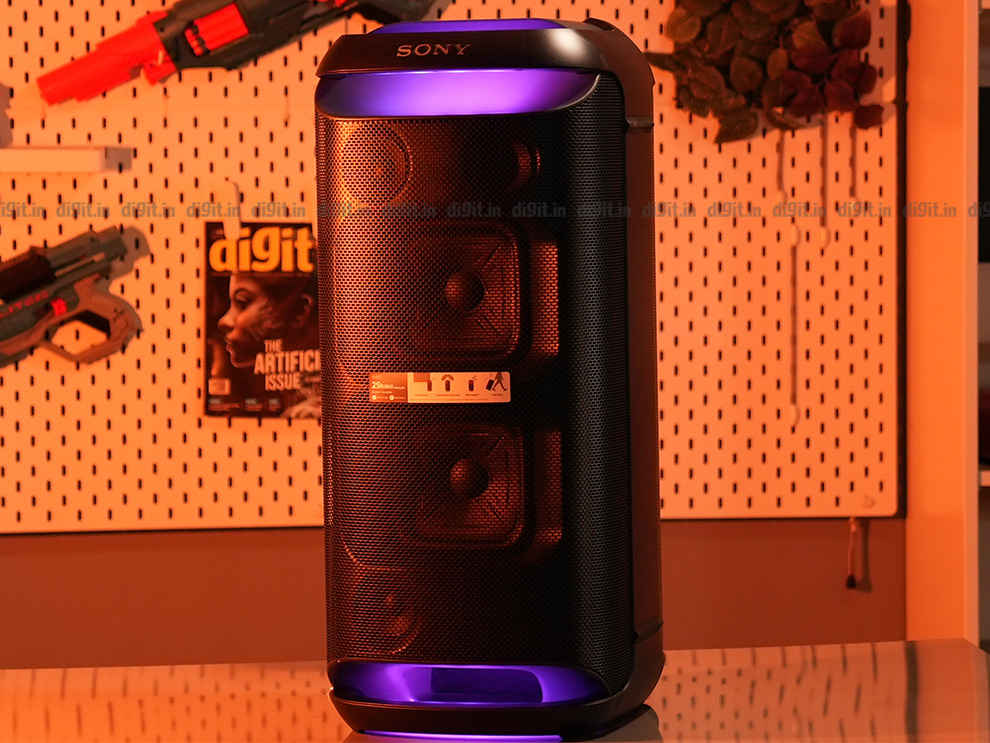
The Sony SRS XV800 is also quite tall; like a big cabinet for your PC. So, you should be mindful of the space you have in your home before buying it. It comes with LED lights that strobe in time with the music and you can change the lighting effects via the accompanying app which we’ll talk about more later. The speaker can be plugged into an electrical outlet or on battery via its 10,520 mAh battery.
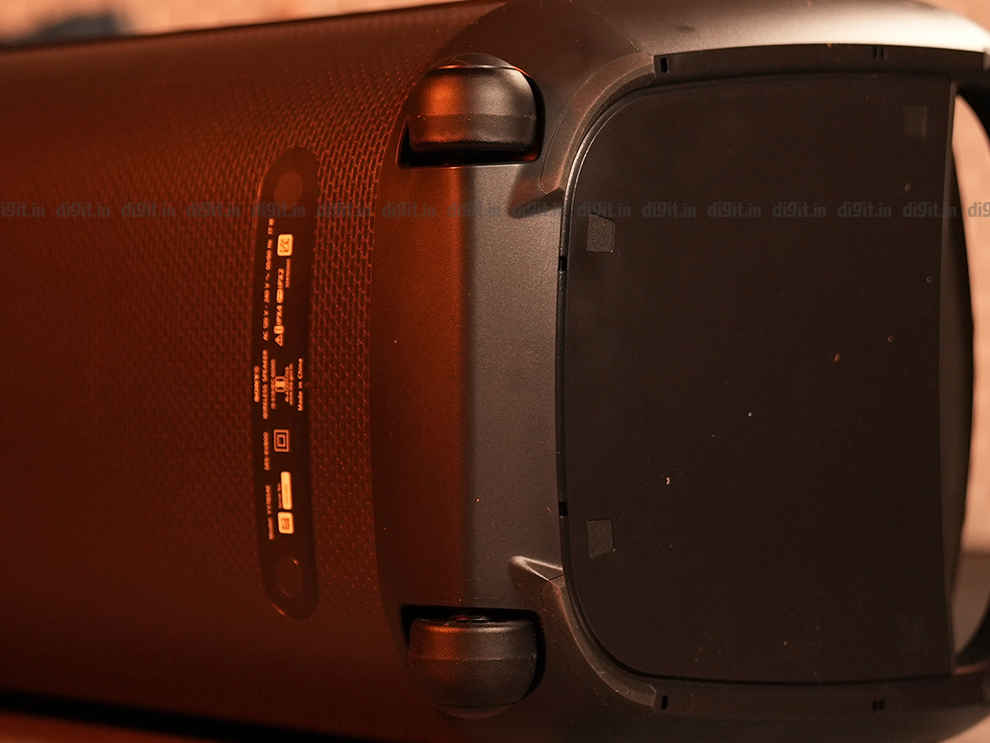
The speaker is also IPX4 rated when placed vertically, and IPX2 when placed horizontally, meaning it should be able to survive light rain (when placed vertically) if you’re having a party in your verandah or garden outdoors. There are several touch controls on the top of the speaker that allow you to change inputs, pause and play, adjust volume levels, and even turn on Mega Bass mode for those who want the extra thump.
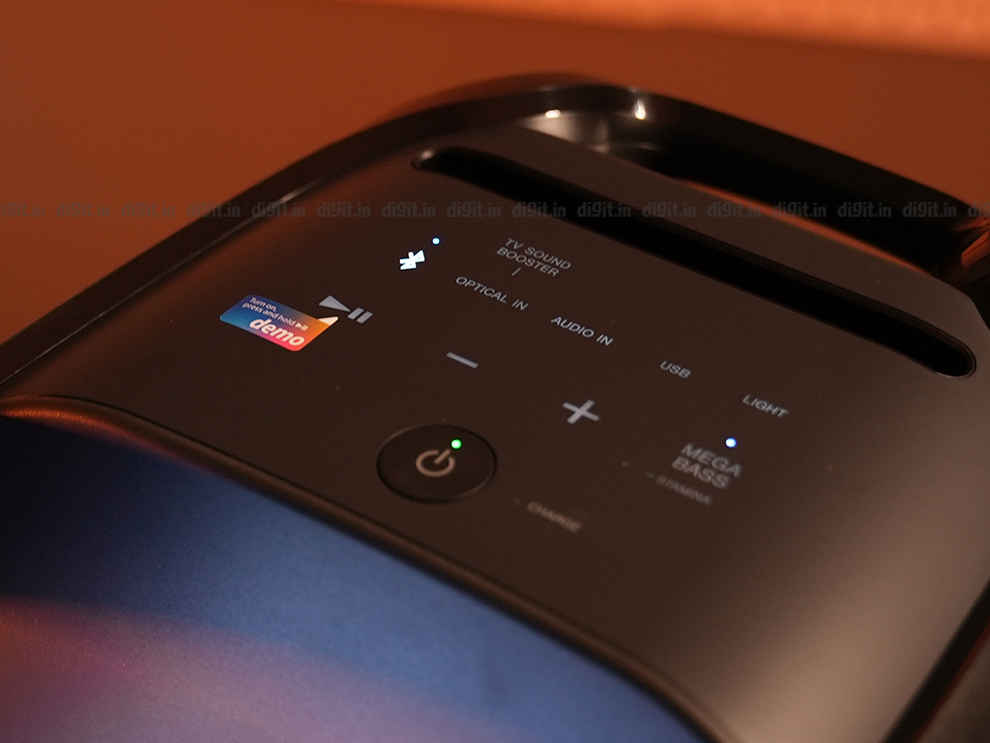
For I/O, it has a plethora of connectivity options such as Bluetooth, two quarter-inch inputs for microphones or instruments such as guitars, a 3.5 mm audio jack, and optical input for using it with a television. There’s no XLR input though, which means that some industry-standard microphones cannot be connected directly. You would need an adapter or a supported cable for those. There’s also a USB-A port which can be used to charge your devices such as smartphones and tablets via the speaker’s gargantuan battery.
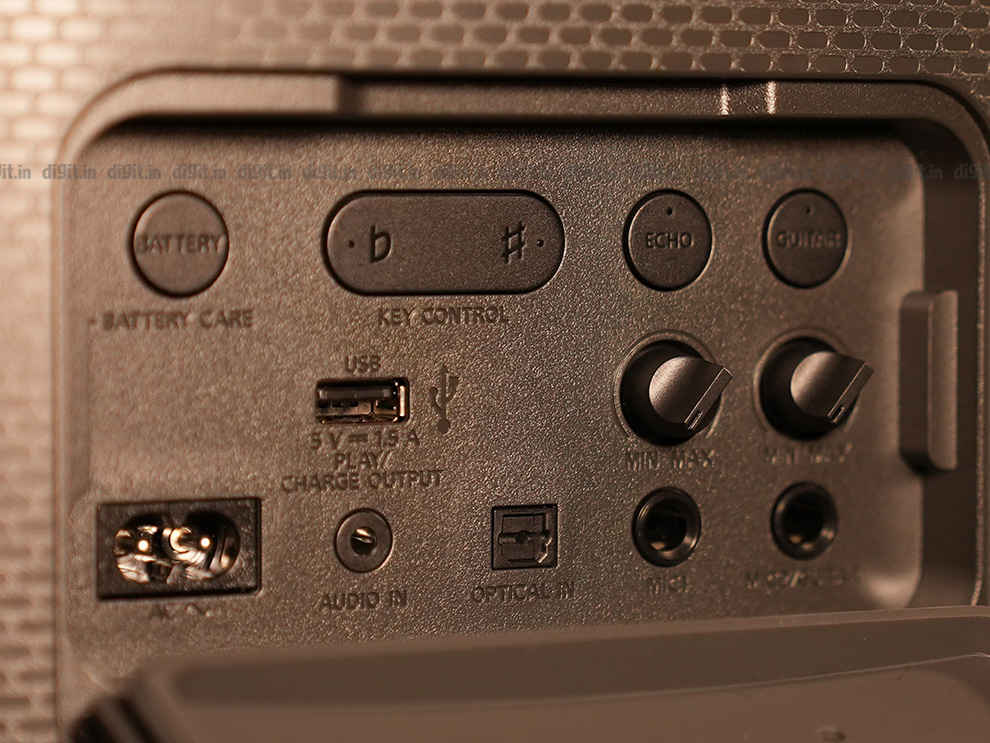
The Sony SRS XV800 comes with Bluetooth version 5.2 and supports the SBC, AAC and LDAC codecs. It supports immersive 360-degree sound, according to Sony. The sound is immersive and fills a mid to large-sized room with ease. It should be loud enough for outdoor parties as well, although we didn’t get to test the outdoor aspect. Sony also allows you to connect the SRS XV800 to other supported Sony speakers for a more immersive experience.
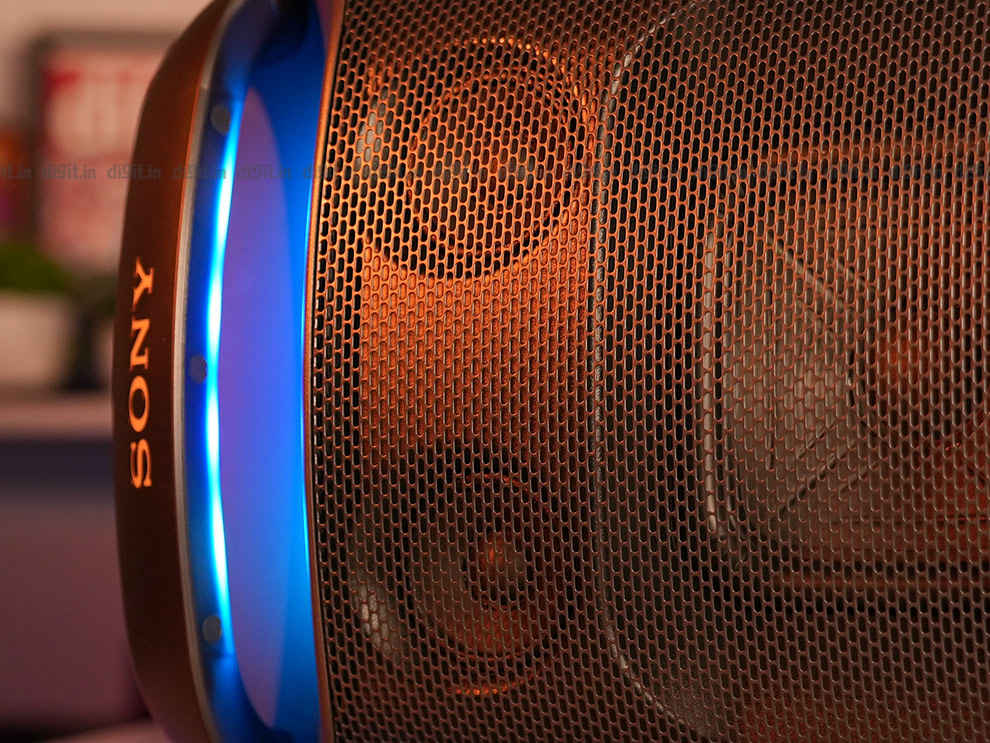
As I mentioned before, you can plug in guitars and microphones to the speaker to organise a karaoke, have a jamming session, and more. The supporting app allows users to add a slight echo effect as well, which is pretty neat.
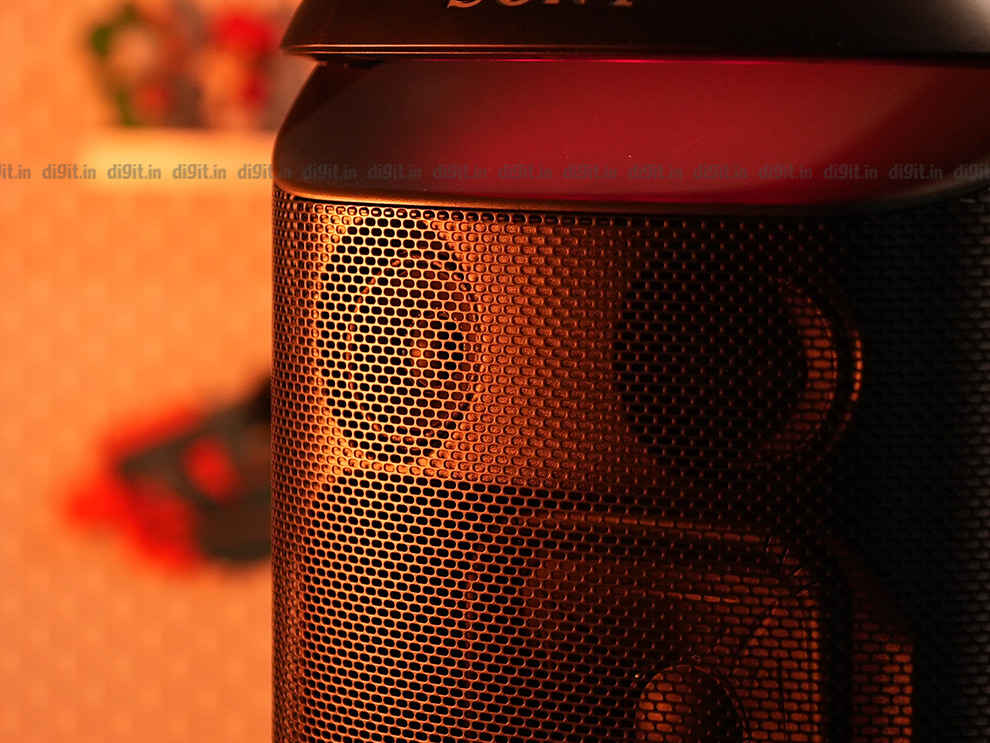
Speaking of the app, the speaker is supported on both the Sony Music Center and Fiestable apps. The app allows you to customise many aspects of the speaker including the light effects, adjust the equaliser, and more. There are some features missing such as Wi-Fi connectivity and voice assistant support. However, the features on offer are unique and conducive to a party environment. Especially, the fun DJ sound effects that you can add to tracks that are playing. Fun stuff!
Sony SRS-XV800 Review: PerformanceThe Sony SRS XV800 packs three tweeters, two 170 mm woofers, and two rear tweeters that work in conjunction to provide 360-degree sound, according to Sony. I used it primarily in Bluetooth mode while connected to the Samsung Galaxy S23 Ultra with LDAC codec active. The speaker also has Sony’s DSEE technology that upscales music to bring it close to lossless levels. Upon first listen, the Sony SRS XV800 impressed me with its energetic and loud sound.
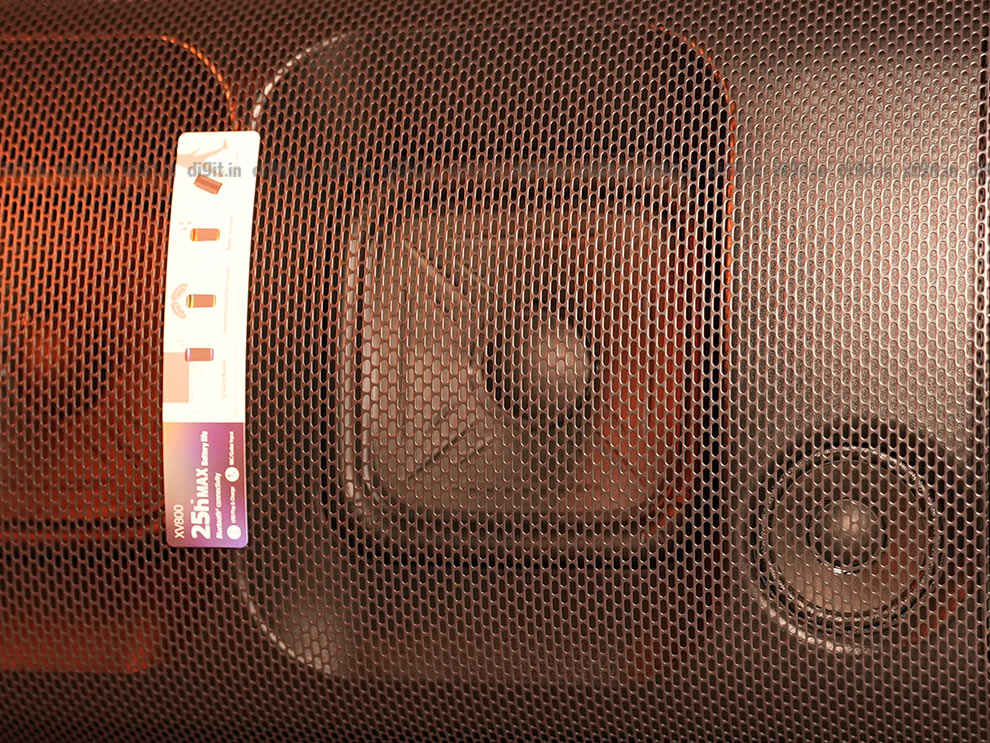
There’s definitely a bias towards the bass regions, however, not enough for it to sound muddy or dark, which is great. The Mega Bass mode adds a bunch of extra weight to the lows, but it tampers with the quality of the mids. It’s good for parties though where you’d want the bass to get a bit more boomy. However, in the default setting, the speaker had a pleasant sound signature with weighty and impactful bass, clear mids and vocals, and decent high reproduction.
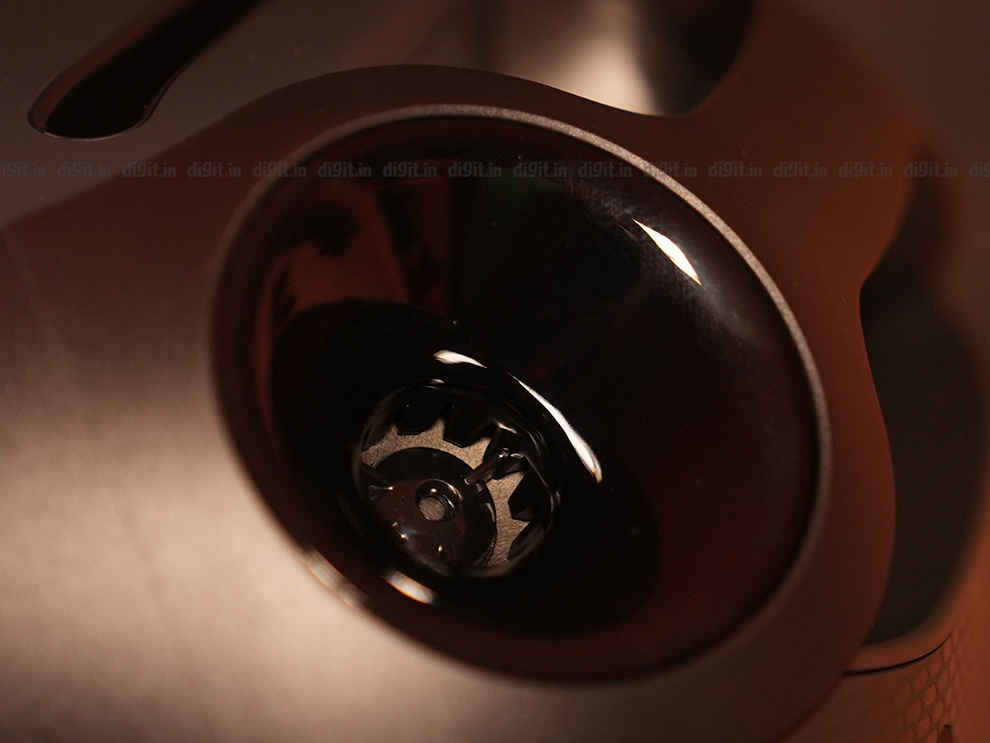
However, I don’t think the sound signature works too well in a home theatre setup. Sure, it’s loud but the bass bias means that dialogue is not given as much importance, which is extremely important when you’re watching TV shows or movies at home. There are several better options in the market at the same price.
The room-filling ability of the Sony SRS XV800 cannot be denied though. Its high-excursion woofers comfortably let it get loud enough for most indoor parties. However, crank it up to the maximum and you’re going to hear some distortion creep in. Regardless, you won’t need to crank the volume up to the maximum level at most times.
As for battery life, Sony promises 25 hours of continuous playtime. In our tests, the Sony SRS XV800 comfortably managed 22 hours with LDAC codec active and at 50 per cent volume, which is impressive. There’s also fast charging support where a quick 10-minute charge will get you 3 hours' worth of playtime.
Sony SRS-XV800 Review: VerdictThe Sony SRS XV800 is an impressive party speaker with impactful bass response and the ability to get extremely loud, however, it’s not the best home theatre solution in its price range. You can get cheaper soundbars that will sound better in your home theatre setup. Some examples include the Sonos Beam 2 and Sony's very own Sony HT-G700. Where the Sony SRS XV800 shines is as a party speaker – you’ve got rich and full-bodied bass response, classy LED lights that sync up with the music, and tons of customisability options via the app. The price is a bit on the higher side though – especially in India where it is not customary to drop close to ₹50,000 on a speaker.
from Audio Video Reviews https://ift.tt/DSekIPs
Comments
Post a Comment